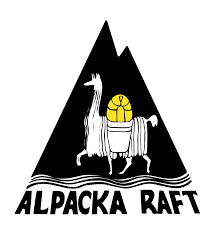In the heart of the Pacific Northwest lies a majestic realm where pristine rivers carve through forests, a place where nature's vibrant tapestry is woven with the shimmering scales of one of its most iconic inhabitants—the Pacific salmon.
As the morning sun casts its hue on the misty landscapes, the stories of these five species—Chinook, Coho, Sockeye, Pink, and Chum—unfold like chapters in an epic saga. Let us embark on a voyage through the intricate tapestry of the Pacific Northwest's salmon species, woven with facts, figures, and the sheer marvel of nature. In the rest of this article we will discuss the five different species of salmon in the Pacific Northwest.
Chinook Salmon:
The "King" of salmon, the Chinook, commands attention with its size and strength. These mighty fish are revered as the largest of the Pacific salmon species. Found in rivers from California to Alaska, they play a crucial role in the ecosystem and culture of the region.
According to the Pacific Salmon Foundation, the average size of Chinook salmon caught in the Pacific Northwest ranges from 10 to 50 pounds, though larger specimens are not uncommon.
The National Oceanic and Atmospheric Administration (NOAA) reports that Chinook salmon populations face threats due to habitat loss, overfishing, and changing ocean conditions.
Coho Salmon:
Sleek and silver, the Coho salmon adds its own vibrant colors to the Northwest's waterways. Known for its leaps and colors during spawning season, these fish are an emblem of resilience.
The Washington Department of Fish and Wildlife states that Coho salmon can weigh between 8 and 12 pounds on average, though exceptional individuals can exceed 20 pounds.
The Wild Salmon Center emphasizes the significance of healthy watersheds and habitats for Coho salmon survival, citing data on the impacts of urbanization and pollution on their populations.
Sockeye Salmon:
With a distinct ruby hue and sought after flavor, Sockeye salmon captivate both culinary enthusiasts and conservationists. Their long journey from freshwater to the ocean and back shapes their rich taste and deep cultural importance.
The Alaska Department of Fish and Game highlights that Sockeye salmon typically weigh between 5 and 15 pounds, with some exceptional individuals reaching up to 18 pounds.
The Nature Conservancy underscores the critical role of intact river systems and undisturbed spawning grounds for Sockeye salmon, citing studies on the impact of dams and climate change on their habitats.
Pink Salmon:
The most abundant of Pacific salmon, the Pink salmon, might be the smallest in size, but its sheer numbers paint the rivers pink during their spawning runs. Every odd year, they stage a remarkable run, flooding the waters in a captivating natural phenomenon.
The Oregon Department of Fish and Wildlife notes that Pink salmon typically weigh between 3 and 5 pounds, with exceptional individuals reaching 8 pounds.
The Pacific Salmon Foundation emphasizes the cyclical nature of Pink salmon runs, with significant fluctuations in abundance from one odd-numbered year to the next, affected by ocean conditions and other ecological factors.
Chum Salmon:
Rugged and resilient, the Chum salmon are the unsung heroes of the Pacific. Despite their relatively low market value compared to other species, they contribute significantly to the ecosystem and serve as a vital food source for various wildlife.
The Fisheries and Oceans Canada reports that Chum salmon can weigh between 8 and 15 pounds on average, with some individuals reaching up to 30 pounds.
The International Union for Conservation of Nature (IUCN) highlights the importance of preserving estuarine and nearshore habitats crucial for the survival of Chum salmon, citing studies on the impact of habitat degradation and pollution.
Sources:



















